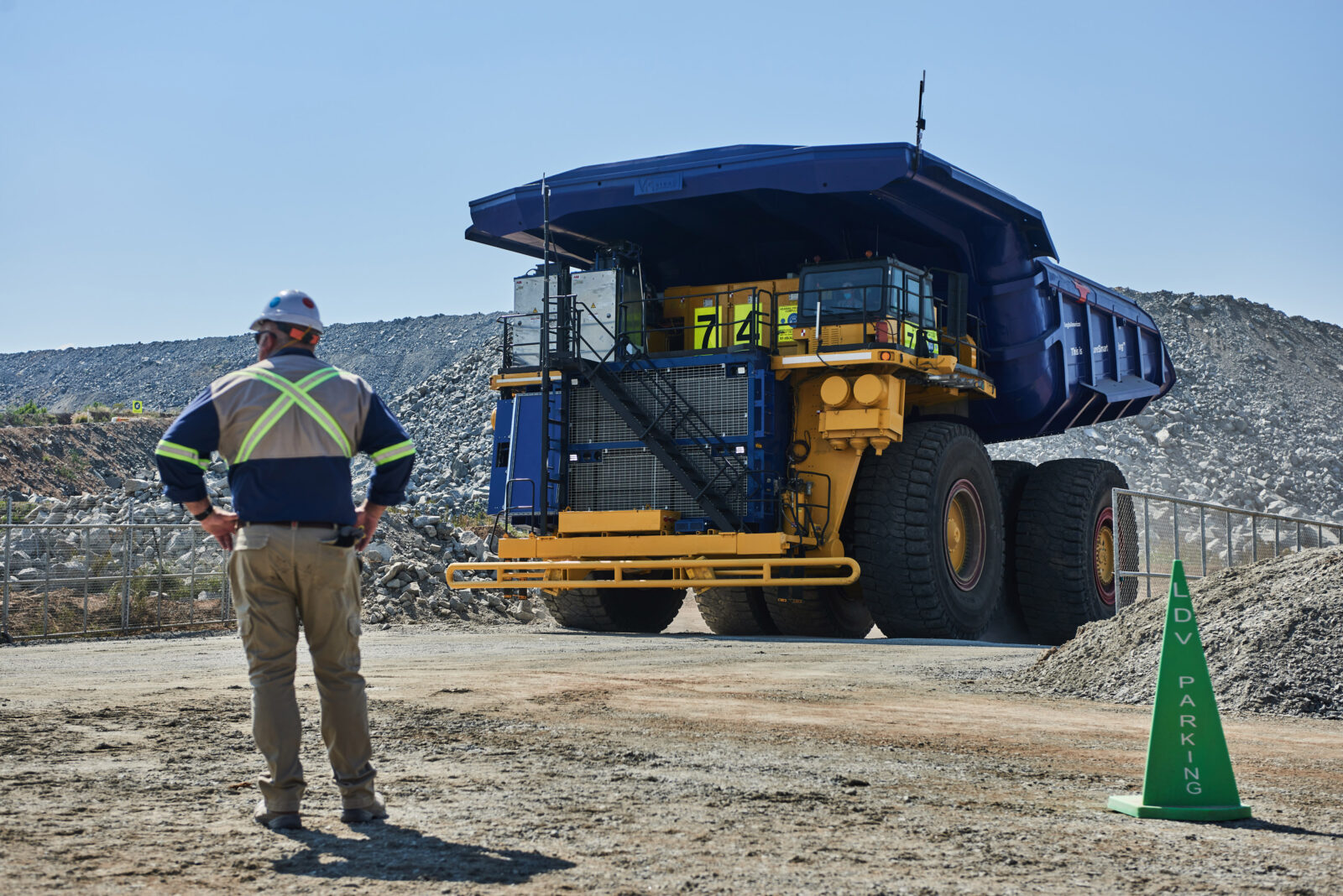The sustainable fuel may be South Africa’s best shot at global value.
Anglo American demonstrates its hydrogen-battery hybrid truck, the largest in the world, at a platinum mine in Mogalakwena, South Africa.
South Africa’s future, like that of many middle-income economies, depends on navigating a complex trifecta: intensifying global fragmentation, increasing domestic constraints and the urgent realities of the green transition.
Globalization is not quite over; the world is too interconnected to unravel entirely. But growing cross-border trade obstacles include carbon border adjustments that threaten South Africa’s manufacturing base and economy. In this context, green hydrogen represents more than just another industrial policy gamble—it may be the country’s best chance to reposition itself in global value chains before the window closes.
Green hydrogen plays to South Africa’s natural strengths: the potential for some of the world’s lowest solar costs, extensive platinum reserves and existing, albeit weakened, industrial infrastructure. The country has competitive potential for green hydrogen, enough to fill 5% of global demand by conservative estimates—up to 2 million tonnes annually.
South Africa’s commitment to multilateralism and non-alignment—while complicating certain relationships—positions it as a viable partner across major markets. Preliminary off-take agreements with the EU and Japan, for instance, are already in place.
But green hydrogen in Europe depends on subsidies that are currently under fiscal pressure. And in Asia, ammonia import plans are still tentative. South Africa cannot afford to wait for certainty—it must create it.
Locally, South Africa’s effort to decarbonize the mining sector, led by Anglo American’s hydrogen truck initiatives, provides ready-made industrial applications. And Sasol’s existing infrastructure offers a pathway for green ammonia production, targeting both fertilizer and maritime fuel markets.
South Africa should use its Development Funding Institutions and Public Investment Corporation for early-mover advantages, ruthlessly focused on three priorities.
“No-regrets” applications. Incentivize the Anglo American and Sasol opportunities, accelerating an industry-wide shift to green hydrogen fleets and the retro fit of Sasol’s green hydrogen ammonia production.
Diversify beyond Europe. Lock in Asian buyers like Singapore and Japan, whose steel industries present niche markets less dependent on EU policy stability.
Equity stakes. Namibia’s approach with the Hyphen project—mandating significant local ownership—provides a valuable template. South Africa must avoid becoming a green resource colony by ensuring equity participation.
If the potential is promising, execution is a challenge. The next five years will determine the trajectory. Global hydrogen capacity is scaling rapidly, with Australia, Chile and the Middle East advancing competitive projects.
South Africa must streamline regulatory processes, maintain policy coherence and build investor confidence. Infrastructure bottlenecks and governance drift have derailed previous industrial initiatives. Green hydrogen cannot afford to face the same fate.
The opportunity is significant but fleeting. Whether South Africa can convert its natural advantages into operational projects within the current window will define its economic future for decades to come.
More from this issue

Navigation
Most read from this issue

The Moon’s Lessons





